TedXMillsaps Rough Script
There's nothing more fun than watching people do things they're not supposed to be doing.
This film you just saw is the first in a series called Young Explorers. It's all about allowing really young kids to explore the world on their own terms. The idea comes from observing that as a culture, we tend to overprotect our children and curate every experience they have -- and how that might wind up keeping them from happy accidents and mistakes they might learn from. So we ask one-and-a-half year olds to kids to just explore, and follow their curiosity.I started making these films with the goal of creating a situation that feels wrong -- a tiny person all alone in the city -- and then, by seeing them navigate and react, and ultimately be okay, make you question your reaction. Maybe our fears of imminent danger are a little overblown. Maybe our paranoia is getting in the way of raising kids with grit and confidence. No matter what they elicit a reaction because the film feels real and so the stakes feel high.
Some people make films about the real stories unfolding in the real world, which we call documentaries. Others make movies about imaginary worlds, which they bring to life with the help of actors and lighting and special effects. To me, there's nothing more exciting than creating films that cast imagined stories within the real world. In that way, the world is invited into the work -- and that means that all the realities of the place I'm working in -- the light, the weather, the commuters, the cultural norms -- these all become part of the work. The truth is that left with a blank page, I rarely have any good ideas -- I need the world to give me a sign for what to make, and where to go next. The humor and the triumph and the tragedy of the Hollywood movie? I want all that, but I also want the believability that you can only get when you work with the world around you as if it's a character in the story itself.
I moved to New York City when I was ten years old, and I came across this photograph at an art gallery. It was up for years, and I must have visited it a dozen time. It's called Hats in the Garment District. The year is 1930, and it's a perfect observation about what life was like at the time in New York: fewer cars, no lampposts, not a parking sign to be seen -- and of course, everyone wore a hat. Can you imagine what it would take to recreate such a scene today?
Photography was my first serious passion, and I spent a huge amount of time wandering around the city, taking pictures. Watching small dramas play out around has always fascinated me, whether it's seeing a petty argument or a moment of confusion or the way light might create a spotlight on a sidewalk after bouncing off a building.
During the attacks terrorist attacks September 11th, 2001, I was 19 years old, and it was my 2nd week back at college. I think most people in the world felt empathy and also fascination with what New York was like at that moment. It was the kind of disaster that we'd seen countless times in the movies -- but not much in real life.
After school, I moved back to New York, and I became a photographer. Cities are always evolving -- that’s what makes them exciting -- and one of the things I noticed was that in the wake of the attacks, there were a lot more rules. And that was well-meaning, but suddenly there was less music on the subways. There were fewer performers in the streets. More police letting fewer things slide meant, unsurprisingly, a place that just felt more policed.
As an artist, that interested me, and I had the idea of making a feature film entirely in public space, as a way of showing that the people could still act out and do what they wanted without asking permission. Why is it so fun to watch people do things they’re not supposed to be? I think it’s because we all fall into our routines, which are generally pretty law abiding -- and forget how completely we fall into routines. And it only takes creating a little bit of disorder to shed light on how true that is.
[[30 seconds of exciting excerpts of characters in dancing in the city streets during Girl Walk // All Day]]
When we finished this film, we set up tons of public screenings to acknowledge that the work was made in public, and deserved to be shared out in the open. It was clear that it brought a sense of delight based on how much people wanted to move along with it, rather than sit still. One big lesson here: We like to watch people misbehave because that let's us live vicariously through them. And dancers, like little kids learning to walk, inspire us with their boldness and lack of shame.
One of the joys of this kind of work is that it requires going out into the world, and spending time carefully observing the world like an anthropologist. I take note of the patterns people move in, the human flow, and the underlying rules that people respect. Sometimes, things that are boring or predictable can be a gift. People standing at a crosswalk become an audience to perform in front of. If you know who is going to be where, then suddenly, you've enlisted a huge cast of extras for your movie that would otherwise be impossible to assemble.
Let me give you an example: it's the heart of winter. It's cold and gray and dreary, and that means people are going to bundle up in big black coats as they go on about their business. You find a major transit hub that's going to spit out a thousand people every time a train shows up. When it's time to shoot, you get an especially nasty day so that everyone comes out of the train station jolted by the cold. And if you can count on the city to be playing the role of grumpy and gray, then you have the perfect stage to tell a story of wonder and rebellion like this:
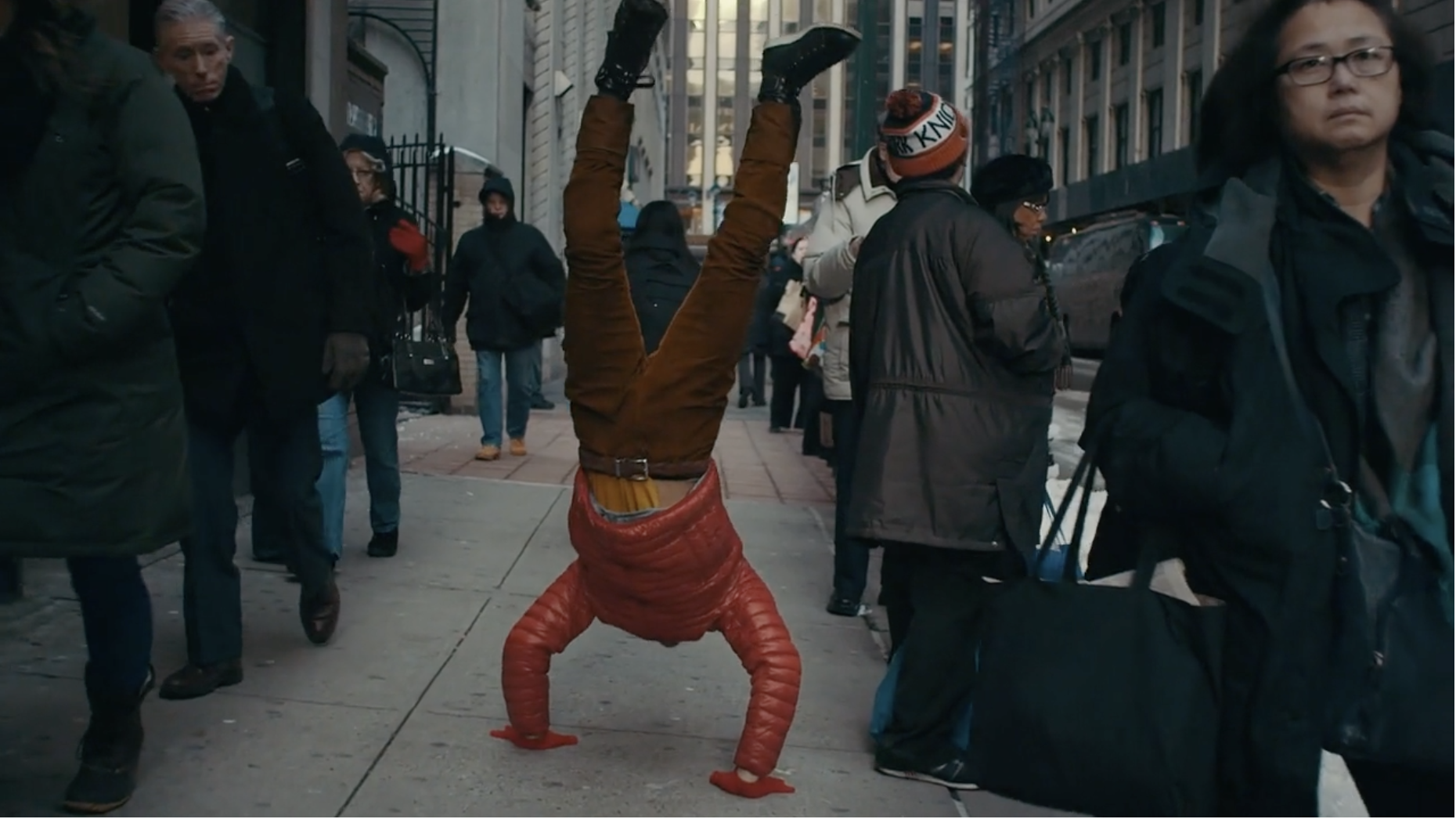
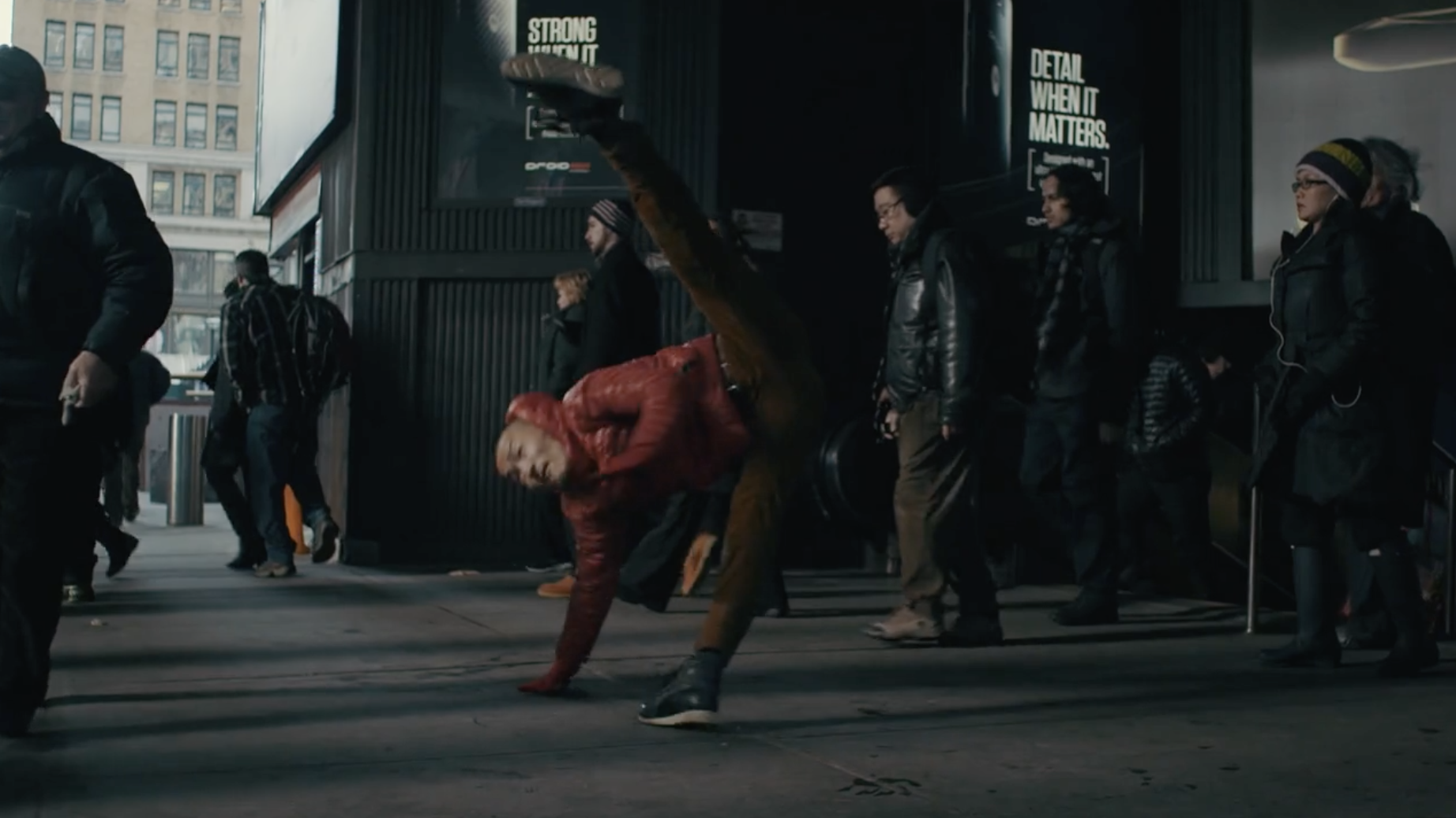
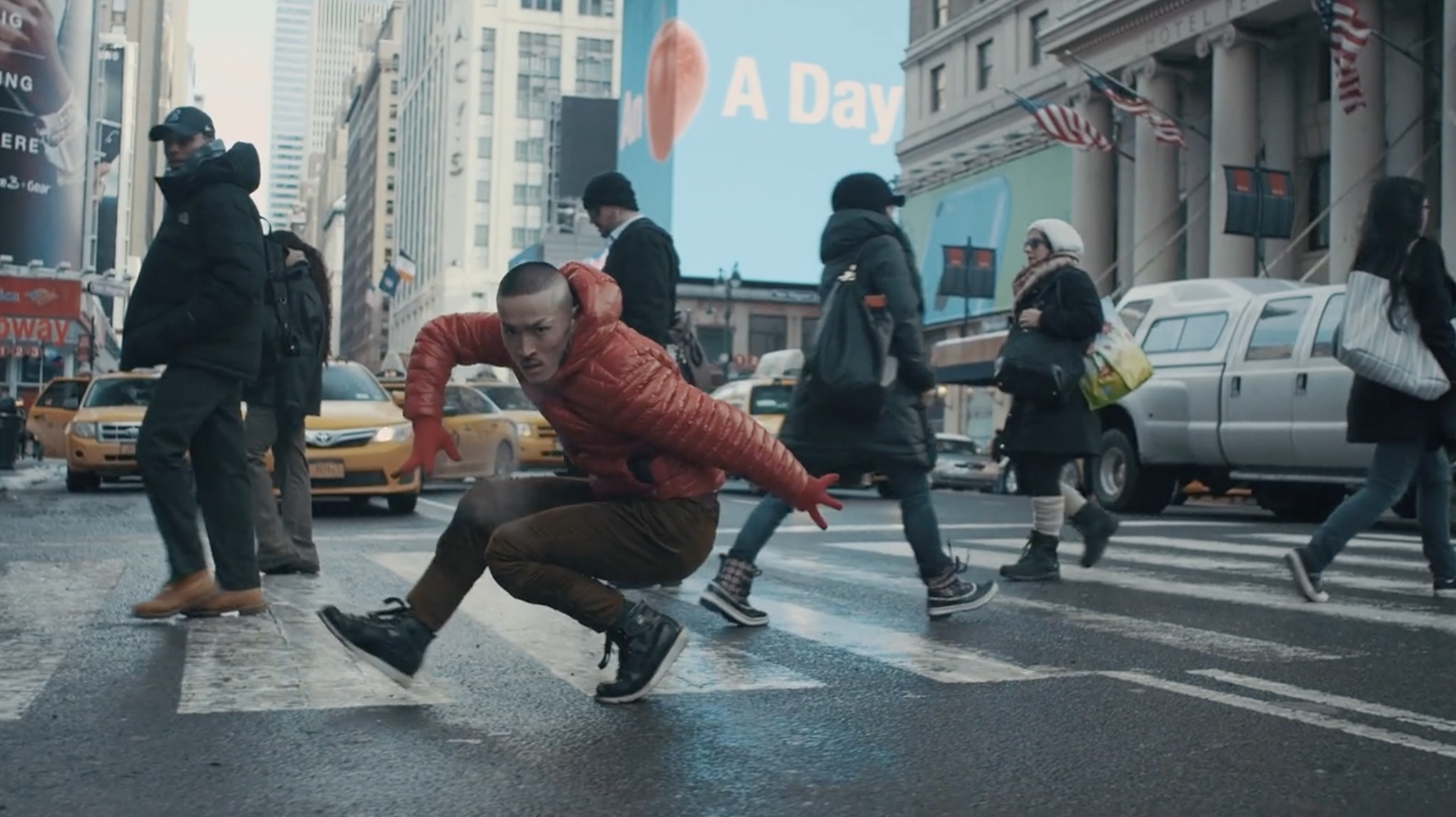

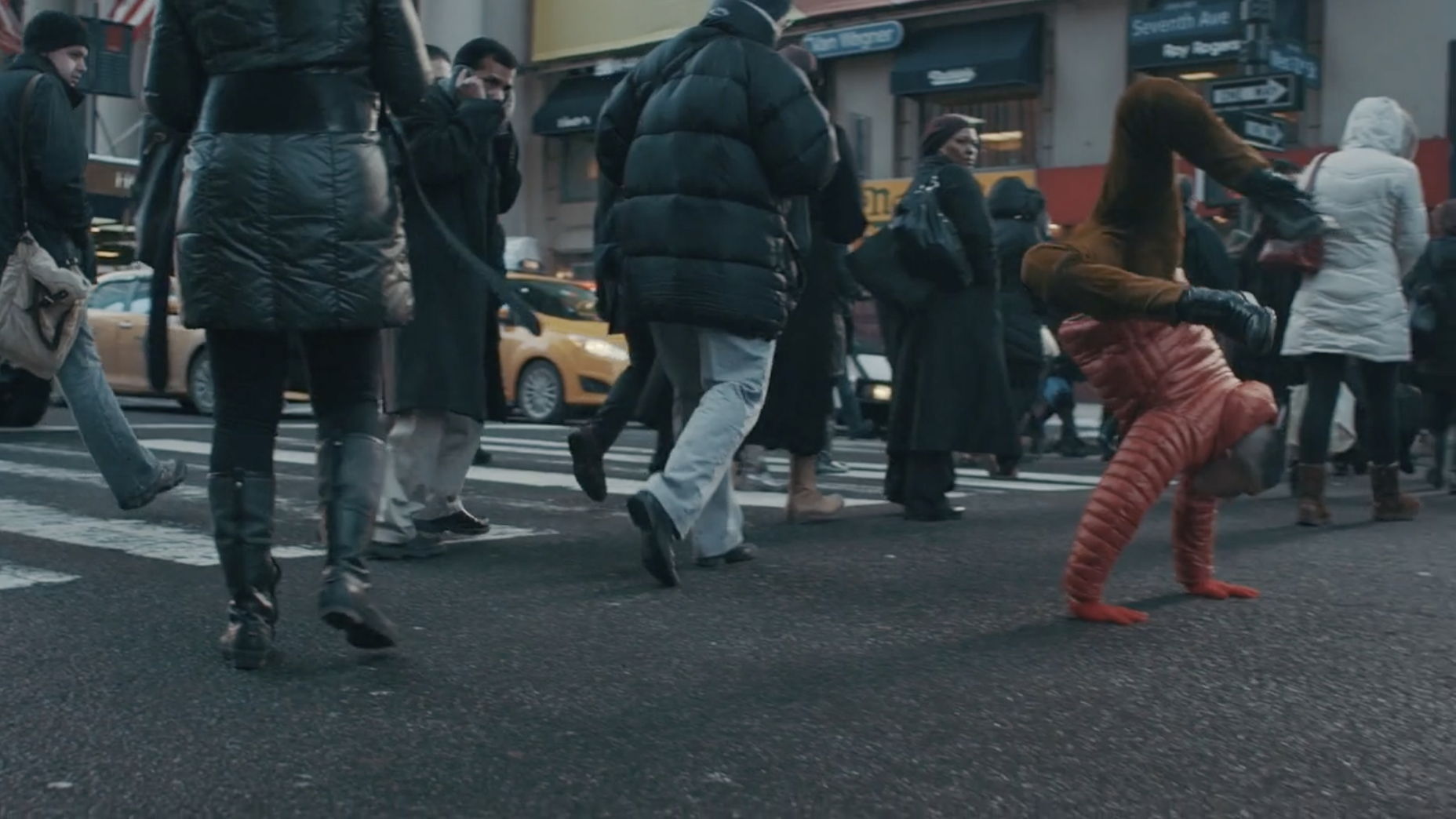
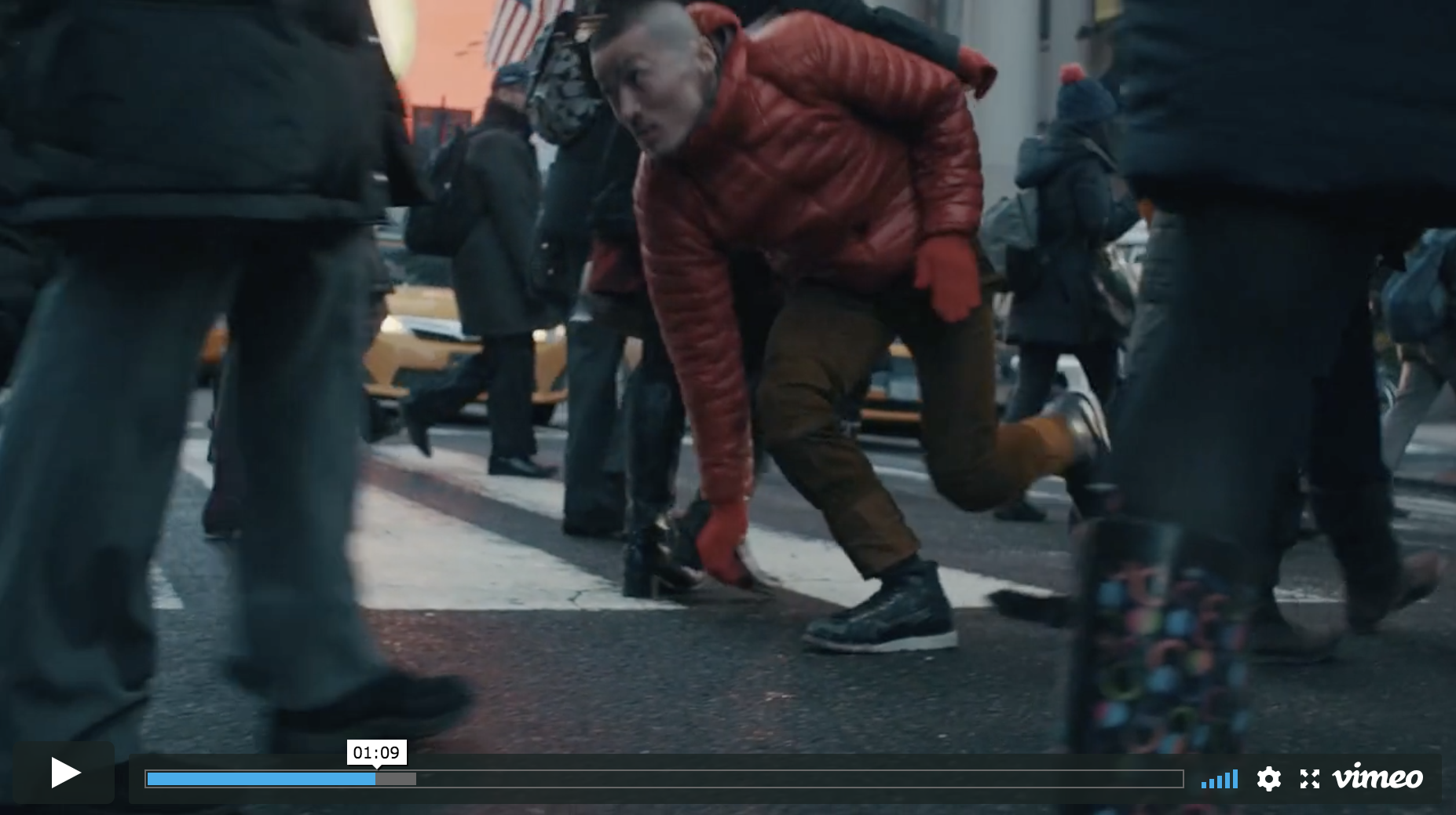
One of the things I hear again and again when people see this kind of work is: How come nobody is looking? I would've stopped to watch. I think most of us are fooling ourselves -- when we're on the go, we are oblivious to most of what's going on around us -- and that obliviousness gives me an opportunity to find and create unique spaces for story-telling. Spaces that are truly authentic because they are the world, uncontrolled, and like life itself, the way they are from one moment to the next is fleeting.
This process introduces a huge degree of the unknown into your film. Things go wrong. Weather changes. The wrong people get in the way. Somebody needs the bathroom and it breaks your momentum. And it requires having faith that by putting the energy and time into a project, something magical might occur. To borrow a famous notion from Paul Coelho: When you want something, all the universe conspires in helping you achieve it. Many of my favorite moments from public filming are moments that weren't planned, or locations that weren't scouted. I like to think that the world sometimes offers you small gifts for showing up and putting in the work. Here's a few moments from a story about love and desire we shot in Bogota:
Collaborating with the world takes planning, and patience. To me, this process is about inviting the world as it really is into the work. It means inviting accidents into the work. And by doing that, I hope to capture a little bit of everyday magic so that it be shared with the world that helped create it.
Thank you.



